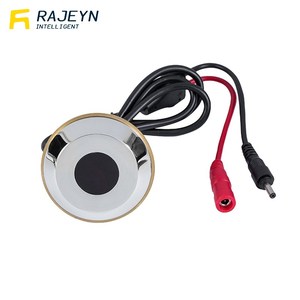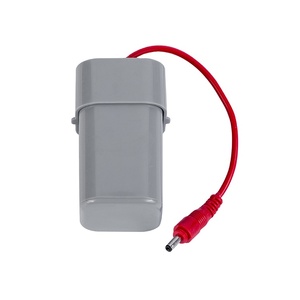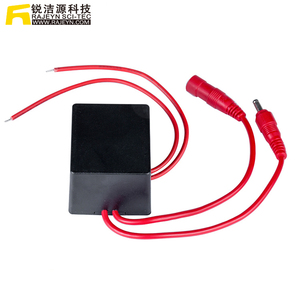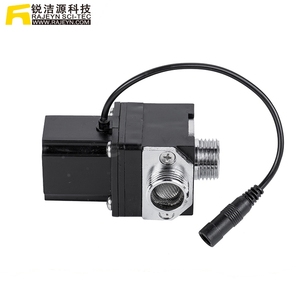(1830 products available)
















































































































































































































An infrared sensor toilet is a facility that uses infrared sensors to enable touch-free operation. These sensors are commonly used in automatic or self-flushing toilets. They detect the presence of a person near the toilet bowl or urinal, triggering the flush mechanism when required. The benefits of these sensor toilets include improved hygiene and water conservation. There are different types of infrared sensor toilets, including:
Automatic Flushing Toilets:
These restrooms use infrared sensors to identify when a person has left the toilet. Once the user stands up, the sensor activates the flush, ensuring automatic hygiene without the need for manual contact. This type of sensor toilet helps eliminate the common problem of incomplete flushing, as it flushes the toilet each time it is used. Moreover, it conserves water by using precise flushes every time.
Touchless Toilet Seats:
These sensor toilets are installed on existing toilet bowls. They have a sensor-activated flush mechanism that triggers a clean and hygienic flush whenever users leave the seat. The seats are equipped with easy-to-replace battery compartments and simple installation instructions. As a result, they are a cost-effective upgrade to a sensor-activated restroom.
Sensor-Activated Urinals:
These urinals use a similar technology to the automatic flushing toilets. They detect male users through infrared beams or proximity sensors. Once a user leaves, the sensor triggers the flush, ensuring hygienic urinals that are always clean and fresh.
Touchless Flush Kits:
These kits convert existing non-sensor activated toilets into sensor-activated ones. They come with all the necessary components to enable automatic flushing, including the sensor, motor, and activation rod. Once installed, these kits detect when a user leaves the toilet and automatically flushes it, ensuring improved hygiene.
Hands-Free Toilet Systems:
These sensor toilets are designed for hospitals and healthcare centers. They feature a foot-activated flush or wave of hand over the sensor-activated light. The toilets ensure minimal body contact with any surface, making them ideal for patients with infectious diseases.
Automatic Flushing:
The primary feature of an infrared sensor toilet is automatic flushing. Once the user stands up from the toilet seat, the sensor will detect the change in motion and automatically activates the flush. This helps in reducing contact with the toilet via a manual flush.
Touchless Opening and Closing of Lid:
The infrared sensor toilet can also open and close the lid automatically. When a user approaches the toilet, the sensor detects the motion and automatically opens the lid. This helps in providing a hands-free experience. It is also hygienic, as there is no need to touch the toilet seat cover when using the toilet. Some models also come with a touchless seat feature, which is similar to the touchless lid feature.
Heated Seat:
Some advanced models of sensor toilets come with heated seats. These toilets have adjustable temperature control, which allows users to set their desired temperature. The heated seat function is beneficial in cold weather conditions, making the toilet more comfortable.
Built-in Bidet and Dryer:
Another interesting feature of an infrared sensor toilet is the built-in bidet and dryer. The bidet function comes in handy after using the toilet. It offers a more hygienic clean than toilet paper alone. The infrared sensor toilet also has adjustable water pressure and temperature settings for a comfortable clean. Once done with the cleaning, the user can activate the built-in dryer, which dries the wetting without using toilet paper.
Deodorizer:
Deodorizer is an important feature of an infrared sensor toilet. It helps to keep the bathroom smelling fresh. Once the user is done using the toilet, the deodorizer can activate automatically to eliminate any odors. Some models come with a carbon filter that captures and neutralizes odors.
Self-Cleaning:
Self-cleaning is a great addition to any bathroom. The infrared sensor toilet can clean itself after each use. The toilet uses UV light or a cleaning wand to sanitize the bowl. This helps to reduce the amount of manual cleaning required and keeps the toilet more sanitary.
Night Light:
An infrared sensor toilet with a built-in night light can be very convenient. The night light will help users find their way in the dark without turning on bright lights. This is especially useful for kids and guests who are not familiar with the bathroom layout.
Toilet areas with automatic flushing infrared sensors are becoming the norm in public restrooms and other commercial locations. These toilets are used in the following scenarios:
Public and Commercial Restrooms:
Infrared sensor toilets are most commonly found in public restrooms in places like:
- Shopping malls and department stores
- Restaurants, cafes, and fast-food chains
- Airports and train stations
- Office buildings and corporate environments
- Hospitals, clinics, and healthcare facilities
- Schools, universities, and educational institutions
- Concert halls, theaters, and entertainment venues
- Museums and art galleries
- Sports arenas and stadiums
- Government buildings and public agencies
Healthcare and Medical Facilities:
Hospitals, clinics, and healthcare centers often use infrared sensor toilets in patient rooms, examination areas, and common restrooms. This helps maintain a clean and hygienic environment in medical facilities. The automatic flushing feature reduces the transmission of germs and bacteria, which is vital in places where sterility and cleanliness are vital.
Office and Corporate Settings:
Corporate offices, professional suites, and coworking spaces frequently install infrared sensor toilets in their restroom facilities. This provides a modern and convenient restroom solution for employees, clients, and visitors.
Educational Institutions:
Schools, colleges, and universities may consider installing infrared sensor toilets in their restrooms to promote hygiene and cleanliness among students, faculty, and staff. The automatic flushing mechanism can contribute to a more sanitary environment in educational settings.
Restaurants and Food Service Establishments:
Toilets with infrared sensors are preferred in restaurants, cafes, and catering facilities to maintain food safety and hygiene standards. The touchless operation is essential in areas where food is prepared and served to prevent cross-contamination.
Restrooms in High-Traffic Areas:
Locations with high foot traffic, such as airports, train stations, shopping centers, and entertainment venues, often opt for infrared sensor toilets. The automatic flushing feature can handle frequent use and reduce the need for manual operation.
Toilet Size:
It's crucial to pick a sensor-activated toilet with features that meet the available space requirements. Consider the space available in the bathroom before choosing the preferred toilet size.
Sensor Type:
Various types of sensors are used in infrared sensor toilets. It's important to choose a toilet with a sensor that meets specific needs and preferences. For example, some sensors are designed for quick and accurate detection, while others offer hands-free flushing.
Durability:
The durability of an infrared sensor toilet is determined by the quality of the materials used in its construction. It's important to choose a toilet that uses high-quality materials like ceramics and plastics. Also, choose a toilet with a durable sensor that can withstand repeated use.
Sensor Range:
The sensor range of an infrared sensor toilet determines how close a person needs to be before the sensor activates the flush. Choose a sensor range that is suitable for the available bathroom space. A short sensor range is ideal for small bathrooms, while a long sensor range is suitable for larger bathrooms.
Power Source:
Infrared sensor toilers can be powered by batteries or electrical outlets. Toilets powered by batteries are easy to install and move to different locations. On the other hand, battery-powered toilets require frequent battery replacement. Choose a power source that is convenient for the bathroom setup.
Maintenance:
Like regular toilets, infrared sensor toilets require regular maintenance to keep them in good working condition. Choose a toilet model that offers easy maintenance and cleaning. Consider factors like the ease of sensor cleaning and the durability of the flushing mechanism.
Q: Are touchless flush sensors prone to false activation?
A: Ideally, false activations should not be frequent. The flush sensors are designed with advanced recognition technology to prevent accidental flushing. Depending on the model, some sensors come with a built-in anti-accidental flushing function that prevents false activation.
Q: How difficult is it to install a remote control toilet?
A: Not very difficult. The infrared sensor toilet comes with a detailed installation guide that shows how to set up the sensor and connect the flushing system. The user can also contact a professional plumber to install the sensor-activated toilet.
Q: What are the common types of sensor toilet?
A: Sensor activated flush toilets are popular in public bathrooms. They come in three major types. Infrared sensor toilets automatically flush when a person stands up from the toilet seat. Hand wave sensor toilets flush with a hand wave over the sensor zone. Touch sensor toilets need the user to touch the sensor zone to activate the flush.
Q: Do automatic flushing toilets require batteries?
A: It depends on the model. Some sensor toilets come with battery-powered flush sensors. They are easy to install anywhere and require no electrical outlet. Other models use AC power to flush automatically. These models provide stronger and consistent sensor recognition. They are more cost-effective in the long run.